Saint Laurent-les-Bains at the time |
At the turn of the twentieth century, the spa town of Saint Laurent les Bains experienced a true golden age, fueled by the popularity of health resorts. Visitors flocked from all over the region to enjoy the sodium bicarbonate waters that gushed forth at a constant temperature of fifty-three degrees Celsius. The journey was akin to a veritable expedition, as visitors often traveled by horse-drawn carriage from the Bastide Puylaurent train station. Once there, grand hotels with elegant facades welcomed a bourgeois clientele seeking therapeutic treatments to alleviate rheumatic pain. Social life revolved around the Renaissance spring, where strolls through the steep, winding streets complemented the benefits of the thermal cures. The unspoiled environment of the upper Borne Valley offered a tranquil setting that captivated the first tourists, drawn to authentic mountain landscapes.
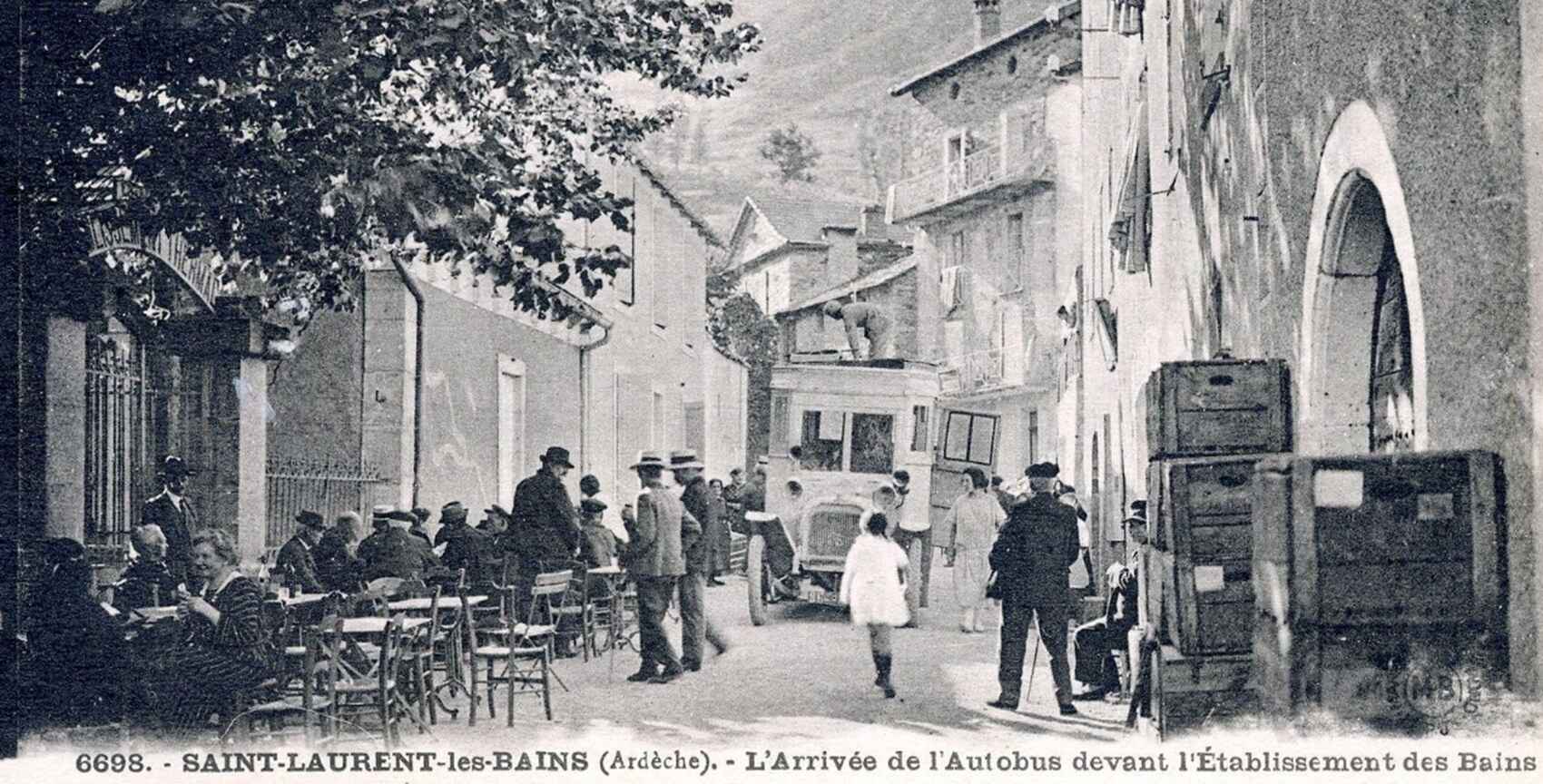
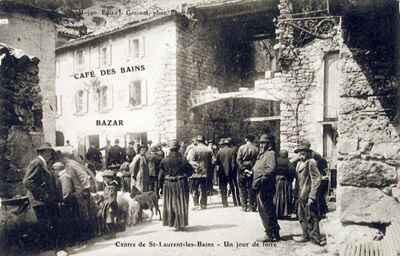 In the heart of a winding valley, where a capricious torrent weaves its bed of sand and rocks, stands the village of Saint-Laurent-lès-Bains. It is a haven nestled in a setting that evokes ancient tales, where nature reigns supreme with a rugged and untamed beauty. The thermal establishments, like lighthouses in the fog, promise healing and comfort to souls in search of relief.
In the heart of a winding valley, where a capricious torrent weaves its bed of sand and rocks, stands the village of Saint-Laurent-lès-Bains. It is a haven nestled in a setting that evokes ancient tales, where nature reigns supreme with a rugged and untamed beauty. The thermal establishments, like lighthouses in the fog, promise healing and comfort to souls in search of relief.
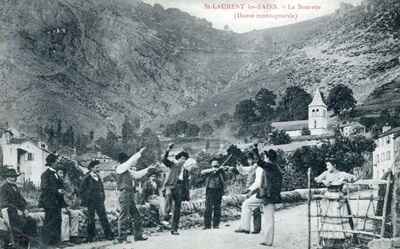 Imagine a string of around two hundred houses lining a departmental road like beads on a thread. Between these walls, during the bathing season, a mosaic of lives comes to life: bathers with bodies bruised by life's trials, spirits in search of renewal. Some advance with difficulty, others lean on the kind shoulder of a loved one or the helping hand of an aide. All are united by the hope that in these thermal waters, from June to September, they will find the key to their rebirth.
Imagine a string of around two hundred houses lining a departmental road like beads on a thread. Between these walls, during the bathing season, a mosaic of lives comes to life: bathers with bodies bruised by life's trials, spirits in search of renewal. Some advance with difficulty, others lean on the kind shoulder of a loved one or the helping hand of an aide. All are united by the hope that in these thermal waters, from June to September, they will find the key to their rebirth.
Saint-Laurent-lès-Bains, with its silhouettes outlined against the high horizon, is a living tableau where each character plays its part. It is a place where, despite the apparent harshness of the landscape, life thrives, fueled by the excitement of those who come in search of the promise of miraculous water.
In the sanctuary of Saint-Laurent-lès-Bains, three thermal establishments stand, vast as cathedrals dedicated to relaxation. But alas, these temples of well-being seem to have lost their splendor, their walls resonating more with echoes of complaints than with songs of healing. Visitors, in search of salvific resources, find the places devoid of the very essence of their promise.
The showers and pools, which should be oases of comfort, appear to have been forgotten by the caring hands of maintenance. A single shower, like a relic from another time, hides in a dark corner, desperately waiting for a charitable soul to bring it back to life. And yet, what force could be unleashed if one mastered this springing flow at 45° Réaumur, like a dragon sleeping beneath the rock?
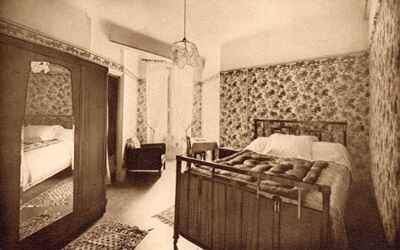 As for the ordinary baths, they are not without flaws. The cabins, too few in number, seem to be remnants of a bygone era, and the water temperature, capricious, defies all attempts at control. A cry rises for a more sophisticated refrigeration system, and for a respectful separation between ladies and gentlemen, so that everyone can immerse themselves in these waters without fearing the indiscreet gaze of others. It is a call for rebirth, to transform these places into true havens of peace, where water and warmth blend into a symphony of well-being, and where every soul can find refuge and comfort in the intimacy of its own aquatic sanctuary.
As for the ordinary baths, they are not without flaws. The cabins, too few in number, seem to be remnants of a bygone era, and the water temperature, capricious, defies all attempts at control. A cry rises for a more sophisticated refrigeration system, and for a respectful separation between ladies and gentlemen, so that everyone can immerse themselves in these waters without fearing the indiscreet gaze of others. It is a call for rebirth, to transform these places into true havens of peace, where water and warmth blend into a symphony of well-being, and where every soul can find refuge and comfort in the intimacy of its own aquatic sanctuary.
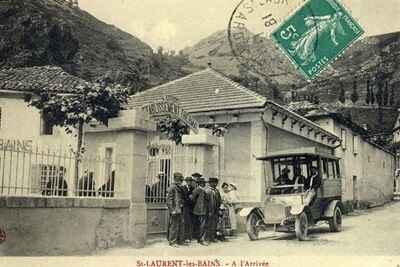 In the wake of high society, the establishments of Saint-Laurent-lès-Bains seem devoid of the pomp and frivolities that charm the elite. Far from the plush salons of Saint-Germain-des-Prés and the Chaussée-d’Antin, these places do not reflect the luxury aspired to by those who, at the arrival of summer, abandon the capital for more temperate retreats.
In the wake of high society, the establishments of Saint-Laurent-lès-Bains seem devoid of the pomp and frivolities that charm the elite. Far from the plush salons of Saint-Germain-des-Prés and the Chaussée-d’Antin, these places do not reflect the luxury aspired to by those who, at the arrival of summer, abandon the capital for more temperate retreats.
These summer visitors, accustomed to the Parisian bustle, seek not the silence of the waters but the continuation of their hectic existence. They come here not for rest, but to perpetuate the tumult of the City of Light, to forge connections, pursue budding intrigues, whether they spring from ministerial corridors or ballroom floors. The ladies, for their part, seem in search of echoes of whispered conversations, words suspended in the air of an intoxicating evening, hoping to find in these waters the last breath of an unfinished sentence. But here, within these walls resonating with an austere past, the whispers of the capital fade away, making way for an unexpected tranquility, a luxury of another kind, that of calm and serenity.
In a world where imagination mingles with reality, Dieppe unfolds its marine charms, tenderly caressing the shore where graceful homes stand. Saint-Sauveur, Bagnères, Cauterets, these names evoke the majestic Pyrenees, while Carlsbad and Toeplitz resonate with echoes of royal gatherings. Baden, with its elite, and Aix, with the azure waters of Lake Bourget and the melancholic echoes of the Grézy waterfall, complete this picture.
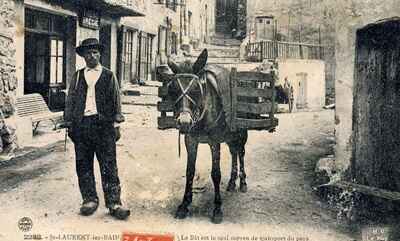 In the salons where conversations hum, under the shaded paths of the parks, and by the light of chandeliers in the ballrooms, only fresh and smiling faces are in order. Pleasure, like a master of ceremonies, distributes its smiles, perfumes, and flowers. Even illness seems to don its gala attire, and the marks of time are hidden under the skilled brush of the artist. It is fitting to acknowledge the efforts of Mr. Merand, who, with few means but much intelligence and goodwill, has managed to improve and adapt the two establishments he presides over to their noble vocation.
In the salons where conversations hum, under the shaded paths of the parks, and by the light of chandeliers in the ballrooms, only fresh and smiling faces are in order. Pleasure, like a master of ceremonies, distributes its smiles, perfumes, and flowers. Even illness seems to don its gala attire, and the marks of time are hidden under the skilled brush of the artist. It is fitting to acknowledge the efforts of Mr. Merand, who, with few means but much intelligence and goodwill, has managed to improve and adapt the two establishments he presides over to their noble vocation.
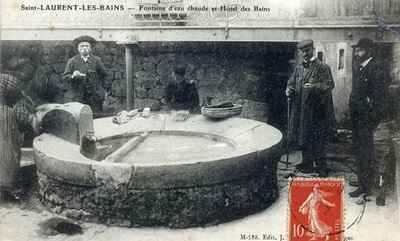 Yet, why have we not yet seen one of those visionaries, always on the lookout for a new adventure, who would have the brilliant idea to acquire the rights to these miraculous waters to erect establishments worthy of their fame? Fortune, without a doubt, would quickly smile upon him. For a long time, it has been recognized that the waters of Saint-Laurent possess unparalleled therapeutic virtues. If the aristocracy abandons these places, it is solely for lack of an environment worthy of their rank.
Yet, why have we not yet seen one of those visionaries, always on the lookout for a new adventure, who would have the brilliant idea to acquire the rights to these miraculous waters to erect establishments worthy of their fame? Fortune, without a doubt, would quickly smile upon him. For a long time, it has been recognized that the waters of Saint-Laurent possess unparalleled therapeutic virtues. If the aristocracy abandons these places, it is solely for lack of an environment worthy of their rank.
At the foot of a granite mountain, guardian of ruins from a distant past, flow the waters of Saint-Laurent. They spring forth with unmatched vigor, laden with a treasure of minerals: abundant sodium bicarbonate, sodium chloride, sodium sulfate, silica, and alumina. These elements, bathed in warmth of 45° Réaumur (), emerge from the heart of the stone with rare vitality.
In these waters also lies the mysterious barégine, an organic substance whose secrets remain veiled to science. It manifests as a clear gel, an exclusive signature of natural sulfurous waters, and seems to be the key to their miraculous benefits. The purity of their hue is strikingly clear; even confined in the glass of a bottle, they retain their essence intact, defying time without ever wilting.
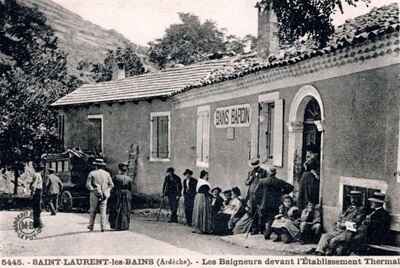 The waters of Saint-Laurent, although they carry within them the power of healing, escape with a fragrance that is hardly welcoming. They remind, in their scent, of the sulfurous reputation of forgotten eggs, their odor varying with the whims of the air. Tasteless, they glide down the throat, awakening a subtly invigorating sensation, like a drink that tickles the senses without ever overwhelming them.
The waters of Saint-Laurent, although they carry within them the power of healing, escape with a fragrance that is hardly welcoming. They remind, in their scent, of the sulfurous reputation of forgotten eggs, their odor varying with the whims of the air. Tasteless, they glide down the throat, awakening a subtly invigorating sensation, like a drink that tickles the senses without ever overwhelming them.
But beyond their healing virtues, these waters hold an almost magical gift: they revive withered vegetation. I have seen wilted gentians and strands of pearlwort, dipped in their source, stand upright and regain the brilliance of their colors, as if touched by an enchanted wand. However, I remain skeptical about their ability to restore the sweet fragrance of flowers, for some qualities seem beyond the reach of even this miraculous source. The inhabitants of the region have found another practical use for these waters: they serve as natural soap, rendering laundry and skin dazzlingly white.
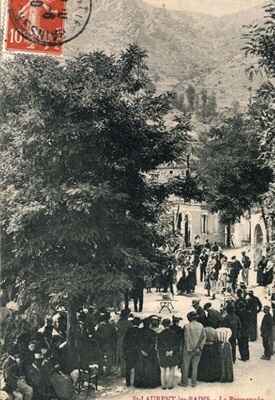 Let me tell you about the hidden virtues of the waters of Saint-Laurent, which reveal themselves in the intimacy of baths, the caress of showers, the softness of drinks, or the veil of vapors. To fully grasp their benefits, one would need to don the doctor's coat, observe with lynx-like attention the patients immersed in these beneficial waters, and deduce the mysteries of their healing.
Let me tell you about the hidden virtues of the waters of Saint-Laurent, which reveal themselves in the intimacy of baths, the caress of showers, the softness of drinks, or the veil of vapors. To fully grasp their benefits, one would need to don the doctor's coat, observe with lynx-like attention the patients immersed in these beneficial waters, and deduce the mysteries of their healing.
It is here that Mr. Maurice Fuzet du Pouget, the learned and humble inspector of these waters, enters the scene. His knowledge, as vast as the depths of the springs, could enlighten the world about the daily miracles he observes. I implore him, not as a critic but as a fervent admirer, to share his discoveries. May Mr. Fuzet du Pouget not see my words as a reprimand, but as a call to reveal the secrets of these waters to the light of day.
For, beyond the analyses already conducted, there remains an ocean of knowledge to explore, to unearth the active principle, the key to healing. In the bowels of the earth, in each spring, lies a mystery waiting for the insight of a curious mind to be unveiled. The waters of Saint-Laurent are no exception; they invite scholars and doctors to dive into their abysses to bring back the light.
 In the depths of Saint-Laurent, the waters rise like ancient healers, offering their benefits in baths and showers. They are the balm for sudden rheumatism, the light for those whom paralysis has plunged into darkness, the relief for the pains of gout and sciatica, and the comfort for faces marked by neuralgias. Even deafness, this silent isolation, finds an echo in the murmur of these waters, which untangle obstructions with gentle ease.
In the depths of Saint-Laurent, the waters rise like ancient healers, offering their benefits in baths and showers. They are the balm for sudden rheumatism, the light for those whom paralysis has plunged into darkness, the relief for the pains of gout and sciatica, and the comfort for faces marked by neuralgias. Even deafness, this silent isolation, finds an echo in the murmur of these waters, which untangle obstructions with gentle ease.
Skin conditions, those diseases with multiple and tortuous faces, transform under their touch. Broken bones and bruised joints are set back in place, as if these waters were imbued with the very essence of life.
Every day, miracles inscribe themselves in the flesh and spirit of those who bathe in these waters. And yet, it seems that their potential remains unrecognized by government eyes. The military hospital of Bourbonne-lès-Bains, although founded by kings and enriched over the centuries, is no longer sufficient. A new healing sanctuary in Saint-Laurent would be a just and deserved tribute to our soldiers, these heroes marked by the scars of war, who deserve to regain strength and health in the embrace of these waters. Such an establishment, dedicated to our protectors, would only beautify the places, without ever overshadowing the civilian establishments that share its breath of life.
In a remote corner, where the waters sing their incessant melody, solitary establishments rise, each cradled by the murmur of the river. Imagine, if you will, that these generous waters are sufficient to fulfill the desires of each place, like a mother watching over her scattered children.
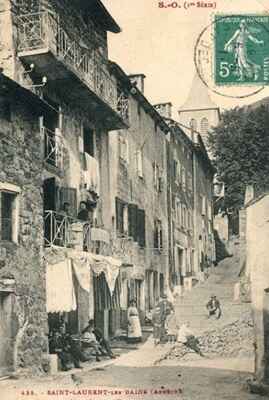 Then, let your gaze wander over the melancholic panorama of Saint-Laurent: the gray roofs of the military hospital buildings intertwine with the dark majesty of the mountains, while the stoic rocks frame the village. The gorge, choked and stripped, bears the scars of avalanches and raging torrents, like a living tableau of untamed nature.
Then, let your gaze wander over the melancholic panorama of Saint-Laurent: the gray roofs of the military hospital buildings intertwine with the dark majesty of the mountains, while the stoic rocks frame the village. The gorge, choked and stripped, bears the scars of avalanches and raging torrents, like a living tableau of untamed nature.
The waters of Saint-Laurent, captured in drinks and vapors, are a balm for the soul and body. They infuse flexibility and vitality, chasing away asthmatic pains and catarrhal ailments. Swollen glands, overwhelming livers and spleens, all bend under their beneficial influence. And in their wisdom, they even cure spleen, that shadow lurking in the mind, threatening to engulf youth in despair.
 Every journey carries within it a story, an anecdote that brings the experience to life. As a storyteller who respects his audience, I offer you mine, brief but authentic. It is a fragment of truth, an almost historical memory, that I humbly lay at your feet.
Every journey carries within it a story, an anecdote that brings the experience to life. As a storyteller who respects his audience, I offer you mine, brief but authentic. It is a fragment of truth, an almost historical memory, that I humbly lay at your feet.
Nearly a century ago, in the Allier valley, a prior of Laveyrune, a man of faith and word, who, from the height of his pulpit, passionately declaimed against drunkenness, that plague of the mountains. His eloquence vividly painted the dire consequences of this vice, before a captivated but skeptical audience.
At the same time, two peasants, whose appearance betrayed a certain ease, walked side by side, indifferent to the prior's sermons. Their path led them to a tavern, whose green sign danced in the wind like a promise of comfort. One lamented over a hot spring that bubbled beneath his dwelling, deeming it useless. The other, sensing opportunity, hurried to propose an exchange: the fountain for a cadis jacket, a creation of his wife Jacqueline for the All Saints' Day celebration.
The deal was struck, and the notary of Saint-Laurent sealed the agreement without delay. Who among the two was the craftier? History does not say. But the fountain, having become a family heirloom, has remained in the hands of the initial purchaser. The descendants, today, might well part with it, but at what price? The cadis jacket is nothing more than a worn memory, and there is no doubt that the compensation requested would be quite different.
Former holiday hotel with a garden along the Allier, L'Etoile Guest House is located in La Bastide-Puylaurent between Lozere, Ardeche, and the Cevennes in the mountains of Southern France. At the crossroads of GR®7, GR®70 Stevenson Path, GR®72, GR®700 Regordane Way, GR®470 Allier River springs and gorges, GRP® Cevenol, Ardechoise Mountains, Margeride. Numerous loop trails for hiking and one-day biking excursions. Ideal for a relaxing and hiking getaway.
Copyright©etoile.fr